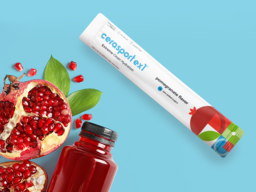Role of Rat Intestinal Glucoamylase in Glucose Polymer Hydrolysis and Absorption
June 02, 2014
Pediatric Research (1990) 28, –; doi:10.1203/00006450-199008000-00017
Role of Rat Intestinal Glucoamylase in Glucose Polymer Hydrolysis and Absorption
Mohammad A K Azad1 and Emanuel Lebenthal1
1International Institute for Infant Nutrition and Gastrointestinal Disease, Children's Hospital of Buffalo, New York 14222, and Department of Pediatrics, Hahnemann University, Philadelphia, Pennsylvania 19102-1192
Correspondence: Emanuel Lebenthal, M.D., The International Institute for Infant Nutrition & Gastrointestinal Disease, Department of Pediatrics, Hahnemann University, Broad and Vine, Philadelphia, PA 19102-1192.
Received 29 August 1989; Accepted 27 March 1990
Abstract
ABSTRACT: Rice starch is a main source of energy in many lesser developed countries. We studied different chain-lengths of rice glucose polymers (GP)to evaluate their possible use in feeding infants in developing countries. The initial GP of rice (G1 = 4.6, G2 = 4.5, G3 = 15.4, G4 = 7.3, G5 = 17.4, G6-G9 = 9.61 and >G9 = 31.3%) was analyzed by HPLC and then separated in a Bio-Gel P-2 column and compared to its short-chain GP of rice (G2 = 22.7, G3 = 28.2, G4 = 14.0, G5 = 16.6, G6 = 11.6, G7-G9 = 6.9%), long-chain GP of rice (>G9 = 100%), and d-glucose. Intraduodenal bolus infusion of 10%solution of short-chain rice GP when compared with long-chain rice GP, the initial rice GP, or d-glucose showed significantly higher values at peak absorption time (0 to 30 min) in the portal venous blood glucose response. The portal venous glycemic response of short-chain rice GP compared with d-glucose was as follows: 2.5 ± 0.1 versus 2.0 ± 0.2 cm2, area under the portal blood glucose curve at 0-30 min (p < 0.01). Glucoamylase, the key enzyme for brush-border hydrolysis of short-chain GP, was assessed with a newly modified glucoamylase assay using GP G5-G8 as substrate. Our finding of faster glucose absorption with short-chain rice GP compared with isocaloric d-glucose might have important physiologic implications for carbohydrate absorption. The osmolality of short-chain rice GP is nearly one-fourth that of glucose. This might have important bearing in the design of infant feeding where increased caloric density with low osmolality is desirable.
Share:
Leave a comment
Comments will be approved before showing up.



